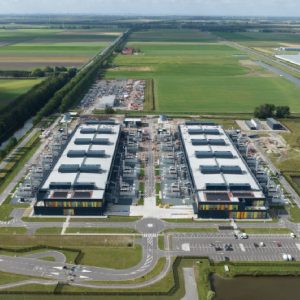
Intel has unveiled details of new silicon products, optimised for bandwidth requirements of next-gen communications infrastructure such as 5G – and says production is slated for Q1, 2019.
At this week’s European Conference on Optical Communication in Rome, Intel said its portfolio of 100G photonics transceivers will accelerate the movement of large amounts of data generated by 5G use cases and the IoT. They are also set to withstand harsh environmental conditions of cellular towers and support optical transport up to 10km.
Intel said that the move to 5G, increased video streaming, and the resulting network traffic are “straining” existing communications infrastructure. The latest silicon photonics meet required bandwidth demands, it added, while the integrated laser tech makes them suitable for mass production and deployment.

These include for cloud service providers like Facebook and Google, the company said, to scale bandwidth and remove network infrastructure constraints, as they look to achieve higher-speed connectivity in a cost-effective way.
Intel’s solutions in silicon photonics, a technology that transfers data between computer chips via optical rays, provide 100 Gigabit-per-second connectivity for large-scale cloud and enterprise data centres. With the new portfolio, the company also said it is expanding beyond the data centre and into the network edge.
See also: What is Massive MIMO?
“Our hyperscale cloud customers are currently using Intel’s 100G silicon photonics transceivers to deliver high-performance data centre infrastructure at scale,” said Hong Hou, who heads up Intel’s Silicon Photonics Product Division.
“By extending this technology outside the data centre and into 5G infrastructure at the edge of the network, we can provide the same benefits to communications service providers while supporting 5G fronthaul bandwidth needs.”
Intel also demonstrated 400G silicon photonics this year, slated for the second half of 2019. Intel claims its Silicon Photonics can move data at lightning speed across hyperscale data centers, which in some cases, span the size of eight football fields.
Last month, Intel also touted the importance of new offerings in what corporate vice president and general manger for data centres at Intel, Alexis Bjorlin, called “a renaissance” of data centre connectivity.
The company has projected the total market opportunity for its connectivity business, which includes silicon photonics, to grow to $11 billion by 2022.
Silicon photonics: A “key technology” in next-gen communications
In the “Roadmap on Silicon photonics” report by University of Southampton researchers, the technology was described as “poised to revolutionise a number of application areas”.
“Silicon photonics is now widely accepted as a key technology in next-generation communications systems and data interconnects,” the report said.
“The mega-datacentre and high-performance computing companies are planning for large-scale deployment of silicon-photonics-based interconnects in upcoming hardware replacement cycles starting in ~2018, because of the anticipation that silicon photonic interconnects will out compete electrical and multi-mode-fiber interconnects.”
“The key driving force behind silicon photonics is the ability to use CMOS-like fabrication resulting in high-volume production at low cost. This is a key enabling factor for bringing photonics to a range of technology areas where the costs of implementation using traditional photonic elements such as those used for the telecommunications industry would be prohibitive.”






